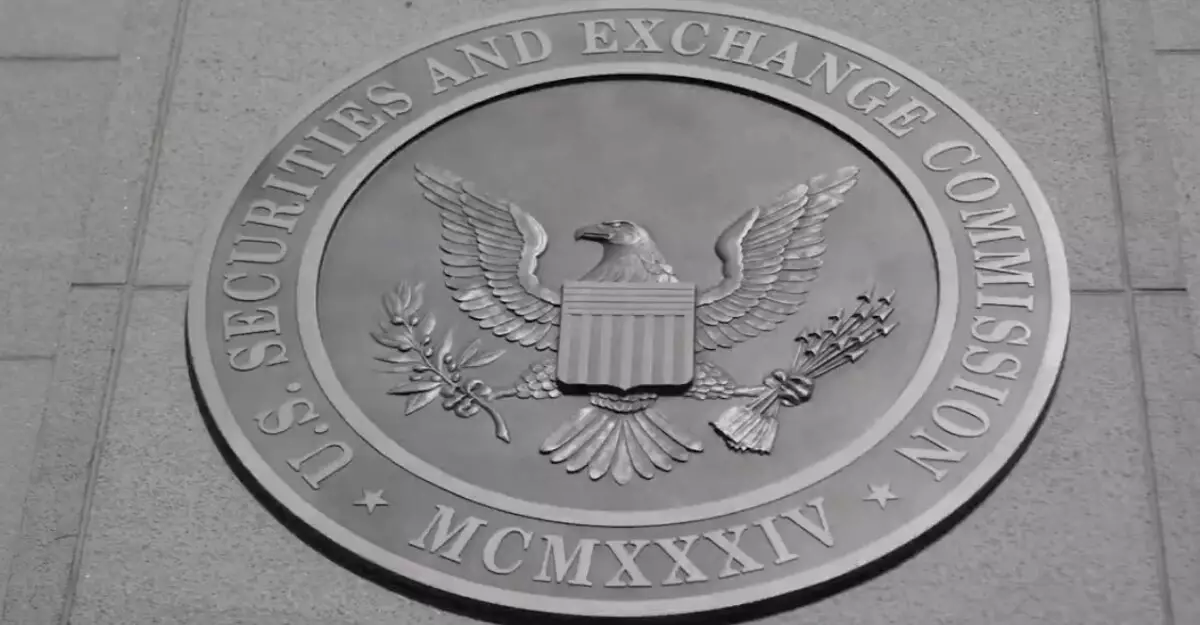The ongoing saga of cryptocurrency regulation in the United States is a testament to the complexity and the delicate balance of innovative finance and protective oversight. The U.S. Securities and Exchange Commission (SEC) has begun to take palpable steps under President Donald Trump’s leadership, signaling a concerted effort to impose order on what was once deemed a chaotic arena of digital transactions. The impending roundtable discussion, scheduled for April 11, seeks to address vital questions surrounding crypto trading, and it reflects an urgent need for regulatory frameworks that will ensure both security and innovation. However, one cannot help but wonder if the rush towards regulation may inadvertently stifle the very creativity that has fostered the crypto revolution.
Panelists and Perspectives: Voices from Varying Angles
High-profile figures will convene at the SEC’s second roundtable meeting, suggesting a well-rounded yet contentious discourse. Professionals like Gregory Tusar from Coinbase and Katherine Minarik of Uniswap Labs are expected to offer vastly differing perspectives on the regulatory landscape. As the SEC attempts to sift through these contrasting viewpoints, it is crucial to determine which interpretations of crypto regulations will protect consumers without creating barriers to entry that might crush nascent companies. While the aim is laudable—protecting national financial security—the regulatory approach must be meticulous and considerate. Failure to achieve this could mean curtailing the innovation that has defined the crypto space.
The diverse lineup of panelists from organizations like the Healthy Markets Association and FalconX points to a concerted attempt to cover all grounds. However, the inclusion of established industry heavyweights raises questions about whether their interests will dominate the narrative. Will the SEC’s discussions genuinely consider the futures of smaller firms, or are they at risk of being sidelined by the interests of larger stakeholders? This dilemma is a critical one, as the equilibrium of innovation relies on a multitude of voices, not merely those embedded within the establishment.
Public Participation: A Double-Edged Sword
One enticing feature of this roundtable is the commitment to public feedback. The notion that attendees, whether in-person or online, will have the opportunity to present fears, hopes, and suggestions for crypto regulations might be seen as a democratizing force in policy-making. However, one can’t help but remain skeptical about how seriously these contributions will be regarded. With the SEC’s reputation often leaning towards the restrictive side of regulation, the question stands: will they genuinely listen to community concerns, or will the gathering serve merely as a token gesture?
Commissioner Hester M. Peirce’s remarks lend an air of optimism—they emphasize a sincere desire to create a “clear, sensible, and fair path forward for the crypto industry.” Yet what measure will demonstrate that these principles are being upheld? It’s essential that this roundtable and future gatherings prioritize transparency in the implementation of gathered feedback. The propensity to ignore public sentiment could result in regulations that feel alien to those they are supposed to serve, generating a further rift between innovators and regulators.
A Race Against Time: The August Deadline Looms
The clock is ticking as the SEC faces a self-imposed deadline to finalize crypto regulations by August. While urgency can sometimes instigate progress, it can also lead to hasty conclusions and poorly thought-out policies. The apparent haste could potentially birth regulations that fail to adult the complexities and nuances of the crypto ecosystem. There’s a nagging fear that this hurried timeline compromises thoroughness, favoring rapid deployment over a genuinely comprehensive approach that future-proofs the landscape.
In an era when digital finance is veering toward becoming the status quo, a significant regulatory milestone needs to be seen not just through a lens of compliance, but as a framework that enables growth. The foundational policies established by this task force will likely shape the future of cryptocurrency well beyond the current administration’s tenure, which adds an imperative level of seriousness to the discussions.
Trust and Transparency: The Best Regulatory Allies
Establishing a regulatory environment that invokes confidence is paramount. As crypto markets fluctuate and evolve, investors need assurance that their interests are being prioritized. The SEC’s commitment to fostering a “pro-crypto roadmap” is a promising signal, but a path marked by transparency and authenticity will be the key to truly thriving amidst regulations. It is only through steadfast collaboration with community stakeholders—ranging from retail investors to tech-savvy innovators—that the SEC can hope to create meaningful guidance that promotes both protection and opportunity.


Leave a Reply